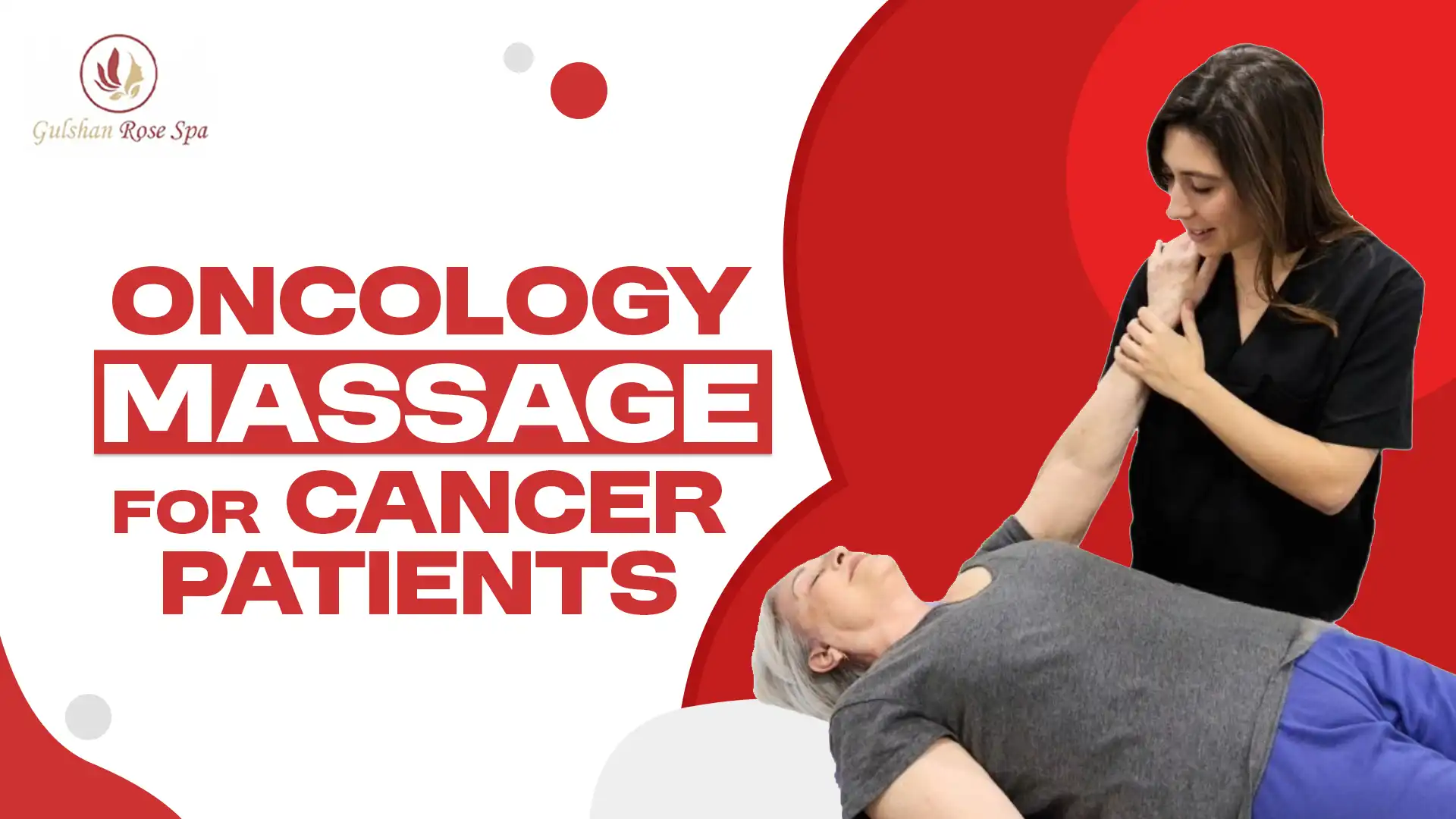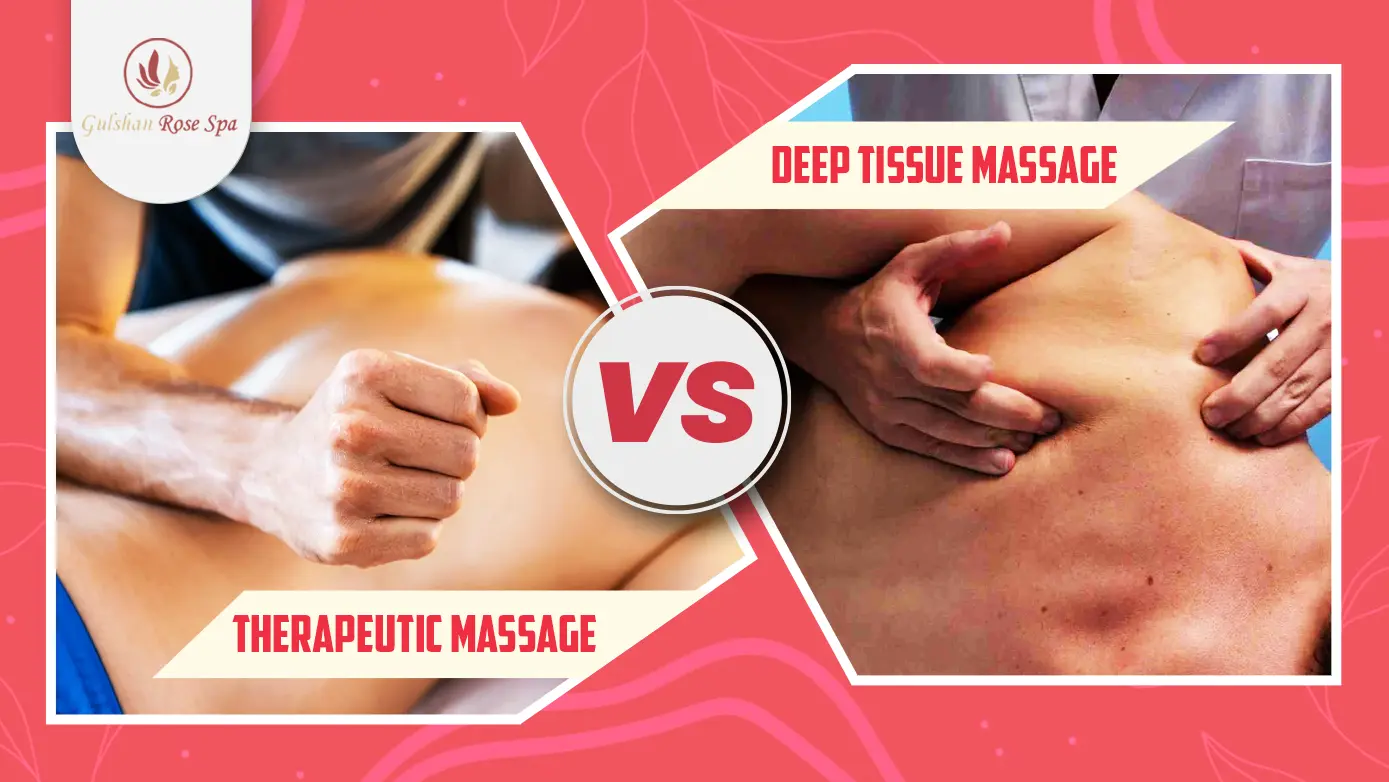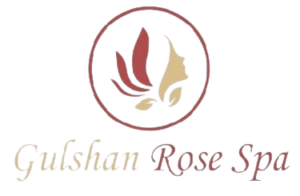Coping with cancer treatment is overwhelming and exhausting, leaving one needing relief. Oncology massage is a compassionate, individualized treatment to help soothe pain and discomfort while calming the body during treatment. Instead of traditional Swedish, Thai, or deep tissue massage, the approach now meets the special needs of people with cancer by using light techniques to calm discomfort caused by chemotherapy and radiation.
If you’re wondering if this therapy is right for you and searching for “oncology massage near me,” here’s everything you should know to understand what this treatment does for you and if it is safe.
What is An Oncology Massage?
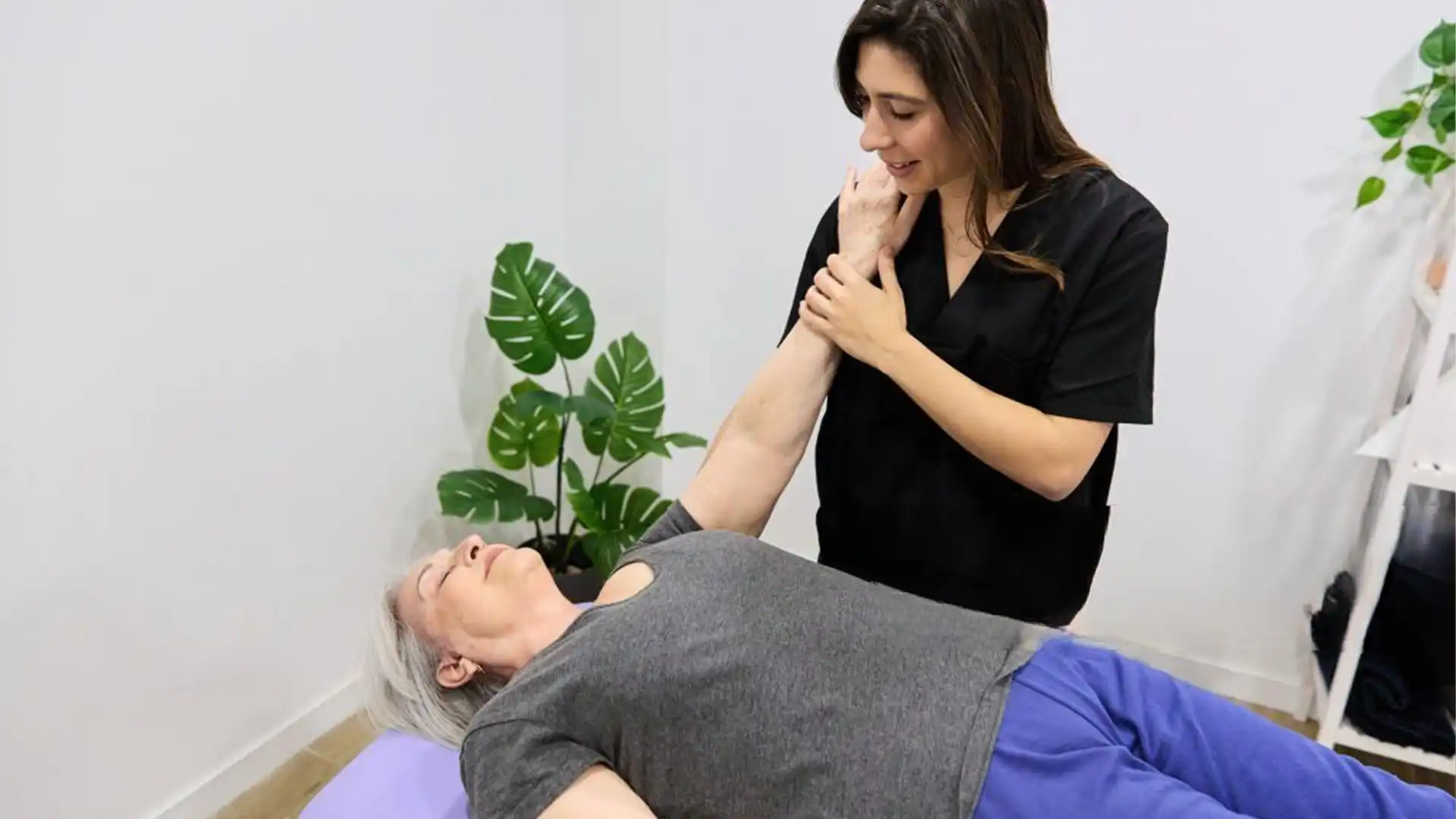
Massage in oncology is a modified version of classic massage, which supports the cancer patient in lymphatic flow and diminishes the side effects of treatment. The therapist strokes with a light touch, in slow motion, following lymphatic pathways to facilitate fluid drainage and detoxification. This improves circulation, diminishes discomfort, and helps with deep relaxation.
How Does Oncology Massage Help Cancer Patients Feel Better?

Oncology full-body massage is a caring speciality modality that helps improve the quality of life for those patients undergoing treatment for cancer. It incorporates gentle techniques with personalized care to address the physical, emotional, and psychosocial consequences of cancer. Research supports its efficacy in the management of symptoms and the promotion of overall well-being.
Benefits of Oncology Massage to Cancer Patients
Pain Relief
Massage in oncology helps to alleviate pain from cancer treatment, like surgery or chemotherapy. Various gentle touch techniques, including myofascial massage, induce relaxation and increase the level of endorphins, which have been associated with pain reduction.
Reduces Chemotherapy-Induced Nausea
Oncology body massage helps in reducing nausea due to chemotherapy when administered with other treatments. Various studies have indicated that massage therapy, when combined with conventional treatments, enhances chemotherapy-induced nausea.
Relieves Anxiety and Stress
Massage therapy has also been shown to lower cortisol levels, reduce stress, and induce relaxation among patients with cancer. This may eventually lead to improved mental health conditions characterized by less anxiety and overall well-being.
Improves Sleep Quality
Massage in oncology supports better sleep due to the induction of relaxation, pain relief, and stress reduction. All these help cancer patients get restful sleep, which is an important part of their recovery.
Eases Cancer Fatigue
Massage therapy decreases the most prevalent and continuing symptom of cancer-related fatigue. Among the many techniques, Swedish massage has been proven to increase energy levels and reduce fatigue.
Types of Massage Include Oncology Therapeutic Massage

Massage in oncology uses many methods to alleviate symptoms, reduce stress, and support the patient toward improved wellness throughout the different stages of illness. Several massage types are commonly included in an oncology bodywork modality:
-
Swedish Massage
One of the most common types of massage used in oncology is Swedish massage. It consists of long, smooth strokes, kneading, and circular movements on superficial layers of muscles.
-
Myofascial Release
The myofascial release includes releasing tension from the fascia, the very connective tissues that envelop the muscles. The technique is very helpful in cases where a cancer patient always has painful and tight muscles with connective tissues following surgery and radiation treatments.
-
Lymphatic Drainage Massage
Lymphatic drainage massage uses light, rhythmical strokes to stimulate the lymphatic system. This helps the body eliminate waste and toxins. It is also useful for swelling of a limb that can occur after lymph node removal or cancer treatment.
-
Deep Tissue Massage
While deep tissue massage is more intense, it’s modified to use lighter pressure. This technique helps release muscle tension and alleviate pain, particularly in areas affected by surgery, radiation, or chemotherapy.
-
Shiatsu Massage
Shiatsu is a Japanese acupressure that applies the use of finger, thumb, and palm pressure to specific points on the body. In oncological therapeutic massage therapy, it is used to aid in relaxation and stimulate the flow of energy without stressing the body.
-
Acupressure
Acupressure applies gentle pressure to various points along the pathways of the body through which energy flows and can help alleviate nausea, pain, and other symptoms of cancer treatment.
Is Oncology Massage Safe?
Yes, it is widely recognized as a safe and effective therapy provided by a qualified professional with specialized training adapted to the physiological complexities of the cancer patient to ensure comfort and safety with effectiveness.
Specialized Training in Safe Practice
Specially trained oncology massage therapists understand chemotherapy, radiation, and surgical effects. They will adapt the technique so as not to hurt fragile tissues. This makes for a gentle, relaxing treatment without discomfort or risk to health.
Medical Consultations for Personalized Care
Consulting a doctor before an oncology body massage ensures it aligns with your treatment plan. Open communication between healthcare providers and massage therapists helps create a safe, integrative approach suited to your health needs.
A Personalised Approach to Ensure Maximum Benefit
Each session is tailored to meet the treatment side effects, pain, and fatigue. Therapists will modify their techniques according to surgery sites, lymph node removal, and general well-being to make this a non-threatening, comfortable experience.
When Oncology Massage Should Be Avoided

While there are many ways in which cancer patients can benefit from oncology, there are specific contraindications that should be avoided or given special caution. Here’s when you should avoid it:
-
During Active Chemotherapy or Radiation Treatment
Massage should not be performed during chemotherapy or radiation unless cleared by a physician because the immune system is compromised and sensitive.
-
Open Wounds or Skin Infections
Massage should not be performed on open wounds or infected areas since this could irritate the wound or spread the infection.
-
Bone Metastasis
Avoid massage over areas of bone metastasis because pressure may cause fractures or increase pain in fragile bones.
-
Severe Lymphedema
The massage is best avoided when the lymphedema is more serious since it can worsen the swelling or cause discomfort unless controlled by an experienced therapist.
-
Recent Surgery or Post-Surgical Recovery
To prevent complications or irritation around incisions, avoid massaging the surgical sites until the patient heals.
-
Blood Clotting Disorders
Massage should be avoided in disorders like blood clotting disorders or low platelet count, as massage may cause bruising, bleeding, or dislodging of clots.
-
Acute Infections or Fever
Avoid massage if there is an acute infection or fever because this can increase symptoms or spread infection, particularly in people who have weakened immunity.
What to Expect from the Oncology Massage Session
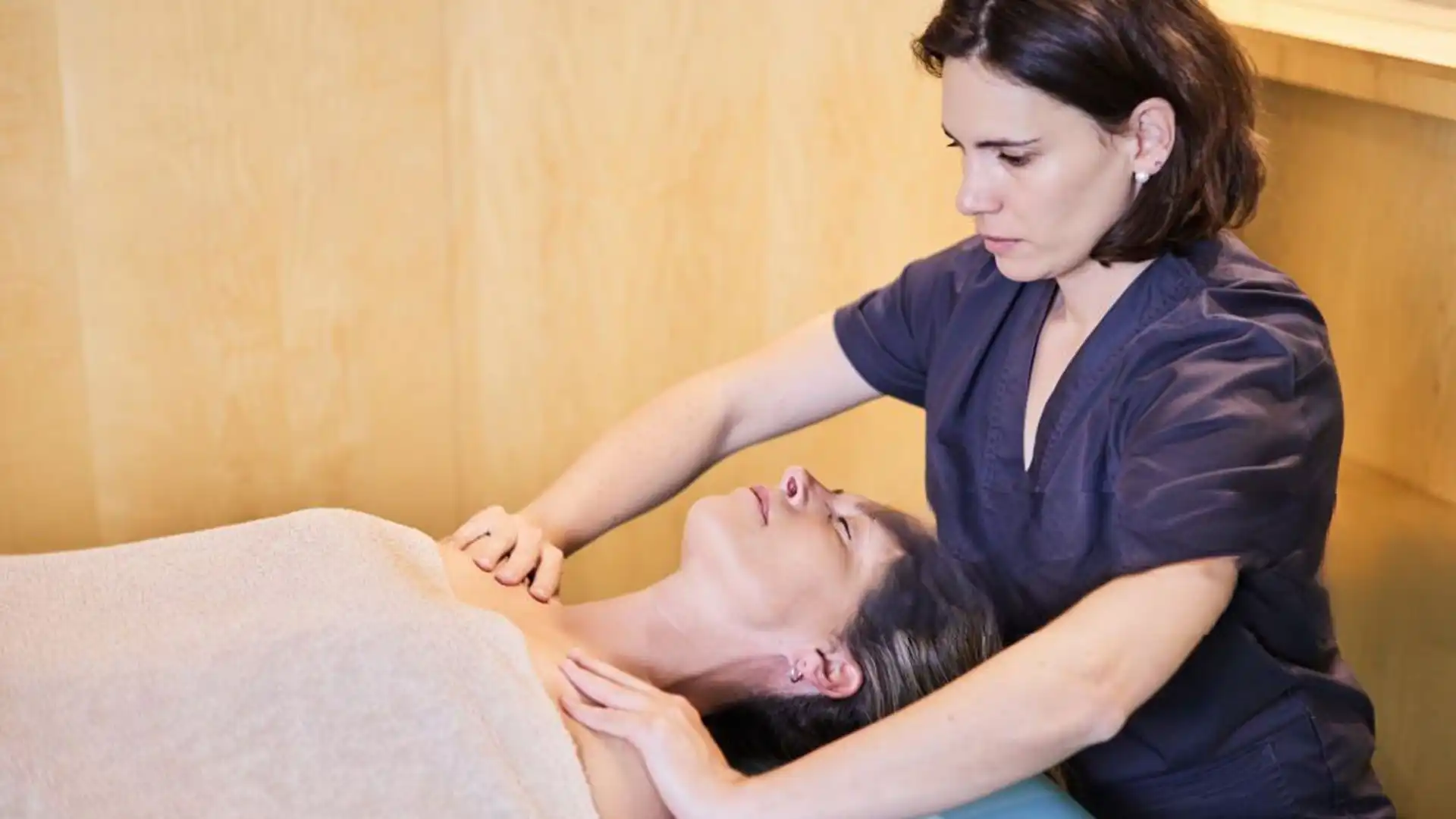
The oncology full-body massage is comfortable and relaxing. It is designed to support the cancer patient during their journey toward healing. What to expect includes:
Pre-session Consultation
This would involve talking about your history, treatment, and areas of concern before the start of the massage itself to ensure the therapy meets your needs.
Individual Approach
The massage therapist will adapt the techniques to your condition, taking into account recent surgery, potential treatment side effects, or areas of sensitivity.
Gentle Pressure
The therapist will use light pressure and slow, rhythmic strokes to promote relaxation, reduce pain, and improve circulation. The pressure is lighter than in a traditional massage so as not to cause injury or discomfort.
Positioning for Comfort
For your comfort, extra cushions and supports will be available. Depending upon your stage of treatment, you may have to lie on your back, or side, or sit in a chair.
Relaxation Techniques
Relaxation techniques that involve breathing and mindfulness make the body aware and less stressed or anxious-oncology massage.
Therapist’s Sensitivity
Sensitivity to your emotional and physical needs is part of your therapist’s professional training. They will make adjustments in pressure or techniques based on your feedback throughout the session.
Safety Precautions
Avoids areas that may be involved in surgery, radiation, or lymphedema. This will make a point to avoid sensitive or inflamed areas and not cause discomfort.
End of Session Care
The therapist may give recommendations at the end of the massage, such as hydrating or doing some light stretches, that will enhance the benefits of the session.
Finding a Qualified Oncology Massage Therapist
The most important thing when trying to find an oncology full-body massage therapist is to make sure they have special training and experience in working safely with the cancer condition. Here are ways you can find a qualified therapist:
Search for Certified Professionals
Search for therapists who have graduated from a credentialed oncology body massage program that has taught them safe techniques when working with individuals with cancer.
Online Listings
Many organizations of oncology bodywork provide online directories you can search in. A search for “oncology massage therapist near me” will also help you find qualified therapists in your locality.
Ask About Experience
Ask about the therapist’s experience working with cancer patients. A qualified therapist will modify the massage according to your needs and condition, whether that entails working with lymphedema, neuropathy, or other side effects from the cancer treatment.
Read Reviews and Testimonials
Check for reviews online, or request referrals from past clients. Positive feedback from other cancer patients will provide a good indication of a therapist’s level of care, professionalism, and success.
Ask About Their Approach
Ask in your initial consult or inquiry how they adapt their work when working with cancer patients. A qualified oncology full-body massage therapist will adapt strokes to be used lightly and assure safety.
Final Thoughts
Finally, we hope this article has given a fair understanding of how oncology massage can become an integral part of your healing process during cancer treatment. With its special caring modality, this massage alleviates the physical and emotional stress that comes with cancer treatment. If you want to reap the benefits, look no further than typing “oncology body massage near me” and finding an experienced therapist in your area who will provide personalized care toward the healing process.
Frequently Asked Questions
What is a cancer massage called?
It is more famously referred to as an oncology. It is a speciality massage that is tailored to the unique needs of individuals affected by cancer to help alleviate discomfort and stress from chemotherapy and radiation.
Why is it called oncology?
The term “oncology” describes the branch of medicine concerned with the prevention, diagnosis, and treatment of cancer. In the case of oncology bodywork, the therapy is specifically tailored to meet the needs of cancer patients, addressing physical, emotional, and psychological challenges during treatment.
How often should cancer patients receive oncology body therapy?
You can receive this massage as frequently as is required by the person’s treatment, health condition and individual needs. Some clients may benefit from coming every week, while others find it more appropriate to come bi-weekly or every month.
Is oncology bodywork safe for patients with weak immunity?
Generally, it is safe for patients with weakened immune systems, provided the therapist is trained in specific needs related to cancer patients. The therapist will modify techniques to minimize risks, avoid areas of vulnerability, and provide a safe, supportive experience.
What technique is used in oncology full body massage?
It is performed with gentle techniques that include light touch, slow strokes, soft tissue manipulation, and lymphatic drainage. These methods are used to reduce pain, alleviate stress, improve circulation, and promote relaxation, according to the individual patient’s

